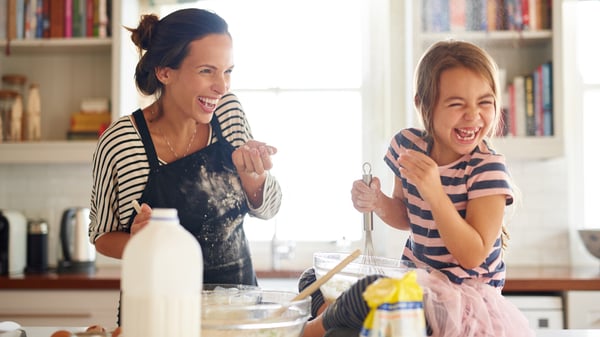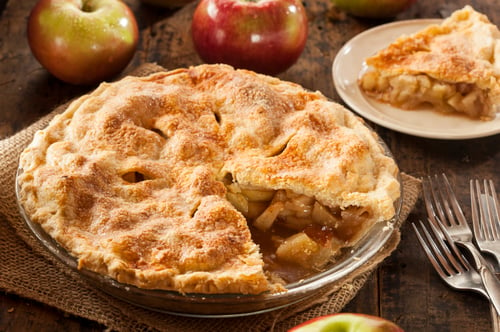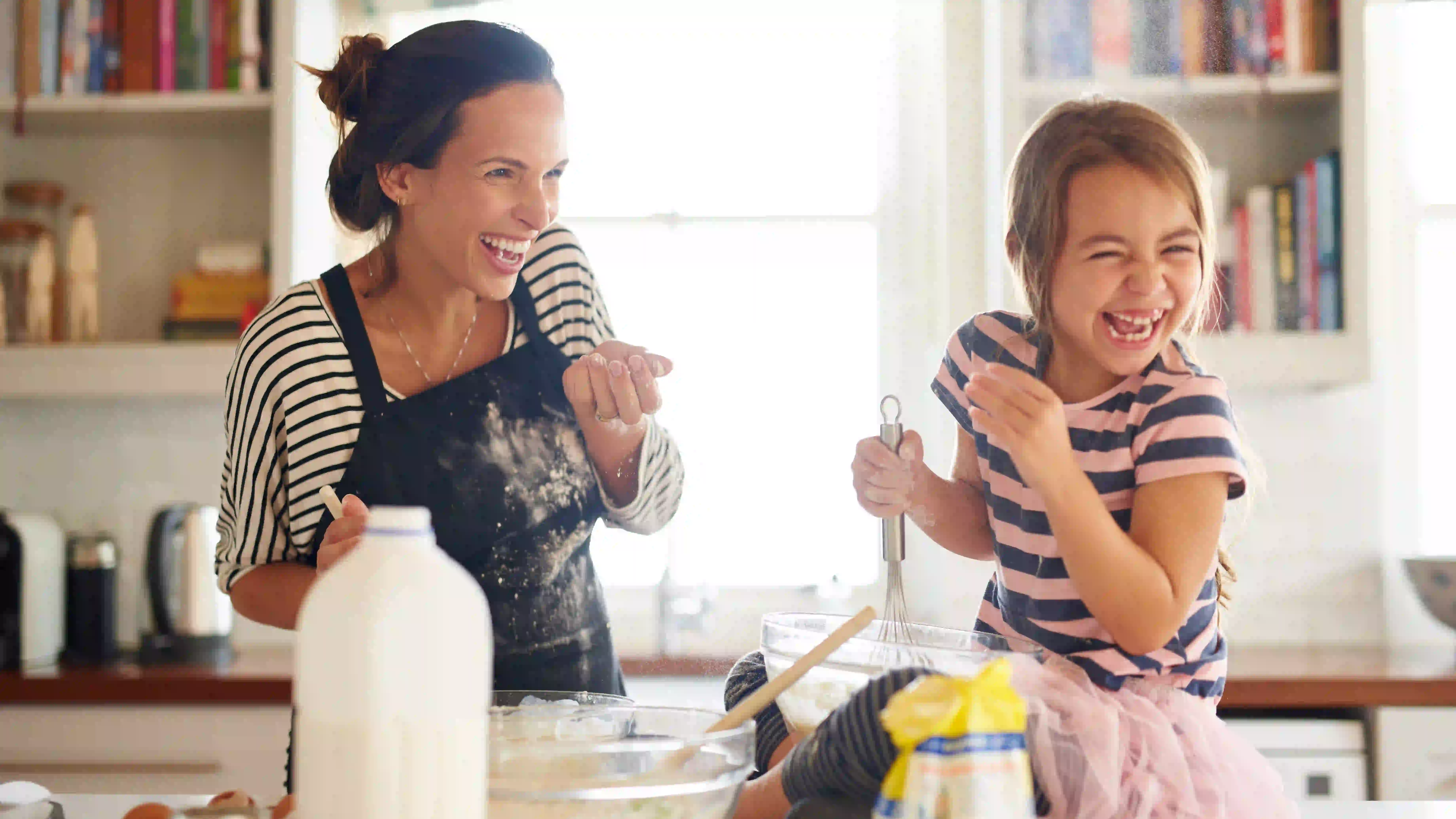The holiday season is just around the corner. Children are often eager to help in the kitchen by measuring, mixing, and licking the spoon, of course. These helping hands often have inquiring minds, so why not use the opportunity to introduce some math skills? Here’s a list of some simple ways to mix math into your holiday baking traditions.

Preschool
Size Comparison: Give your child a few measuring cups. As you need them, ask your child to hand you the smallest cup, the middle-size cup, etc.
Number Recognition: With measuring cups in hand, ask your child to hand you the cup with a specific number on it. For example, “Can you hand me the cup with a 4 on it (1/4 cup)?”
Early Elementary
Ordering Steps: With all ingredients pulled out onto the counter, read the recipe aloud. Have your child follow along, putting the ingredients in the order in which they will be used.
Explore Fractions: Give your child a smaller measuring cup such as ½. Have them measure two ½ cups and pour them into a 1-cup measuring cup. Ask them what they notice. Have them predict how many 1/3 cups it will take to fill up the 1 cup.
For a challenge, try to complete the recipe without using the 1 cup measuring cup, using the smaller ones as described above instead.
Ordering Fractions: Look at the measurements for each ingredient and ask your child comparative questions such as “Which is the largest amount?” or “Do we need more flour or sugar?
Upper Elementary
Reading Fluency: Have your child read the recipe aloud, including everything from ingredient names to measures, and oven temperatures.
Operations with Fractions: Are you baking for a large crowd? Have a discussion with your child about how to double or triple a recipe. How much of each ingredient will be needed?
Time: Pretend that your timer is broken. Read the current time with your child and explain how to figure out what time it will be when the item is done cooking.
For example, let’s take a casserole with a 35-minute bake time that’s put into the oven at 3:40 p.m. Help your child determine how many minutes until the next hour. In this case, it would take 20 minutes to get to 4:00 p.m.
Your child will then need to determine how many minutes of the 35-minute cook time are left after those initial 20 minutes. Finally, add the remaining cooking minutes to 4:00 p.m. and determine when to remove the casserole from the oven. In this case, the casserole would be finished baking at 4:15 p.m.
Middle and High School
Geometry with Circles: If you’re baking a pie, have your child measure the diameter of the pan. Ask them, “What would the circumference of the pan be?” Have your child divide the circumference by the diameter and see what value they get. Do they recognize that number?
Have your child find other circular items such as mini pie tins, cupcake holders, or cake pans. Have them repeat the steps and watch them be amazed by what they find every time!

Percentages: Show your child the nutrition label on the ingredient packaging. Discuss the measurements and the percent of daily value. Ask questions such as “How many servings of milk should I have to reach 100% of my daily calcium?”
These strategies work for all ages and all recipes. So, what are you waiting for? Slip on an apron, get out the step stool, and decide on a festive recipe together. Pumpkin  perhaps?
perhaps?
For more ideas on using math in the kitchen, be sure to check out our sources below.
Sources:
“Baking Math for Families and Young Children.” National Association for the Education of Young Children.
“8 Ways Kids can Practices Math in the Kitchen.” Premeditated Leftovers.
 Ryan Jackson recently joined the Lincoln Learning Solutions team as a mathematics teacher. She has more than 8 years of experience in online education. Ryan spends her free time traveling across the U.S. with her husband and two children.
Ryan Jackson recently joined the Lincoln Learning Solutions team as a mathematics teacher. She has more than 8 years of experience in online education. Ryan spends her free time traveling across the U.S. with her husband and two children.



 perhaps?
perhaps? Ryan Jackson recently joined the Lincoln Learning Solutions team as a mathematics teacher. She has more than 8 years of experience in online education. Ryan spends her free time traveling across the U.S. with her husband and two children.
Ryan Jackson recently joined the Lincoln Learning Solutions team as a mathematics teacher. She has more than 8 years of experience in online education. Ryan spends her free time traveling across the U.S. with her husband and two children.